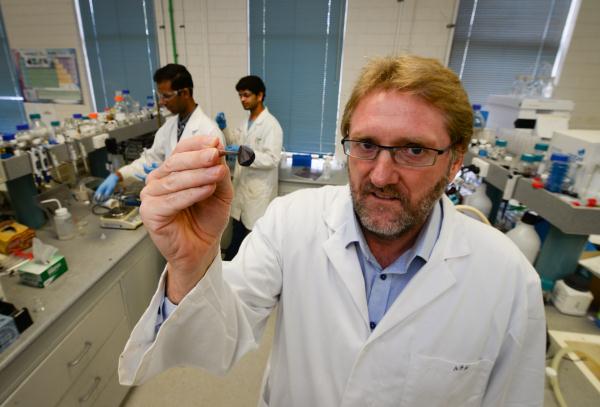By JOHN VAN KLAVEREN
AN INNOCUOUS-looking piece of film like flimsy, transparent carbon paper has the science world abuzz.
Graphene is a form of carbon now acknowledged as the thinnest, strongest, truly two-dimensional material yet discovered.
Also believed to be the most electronically-conductive material known to humankind, graphene’s features have researchers the world over searching for uses since its discoverers won the 2010 Nobel Prize in Physics.
A Deakin University team is working in collaboration with China’s Qingdao University on wayt to bind graphene to other materials to harness its electronic conductivity.
Deakin team member Professor Colin Barrow marvelled at the material.
“Once separated, the graphene sheets can be combined back together to make more a flexible structure and use them in different applications, such asin sensors and detectors for medical devices,” he explained.
“There’s a lot of interest in using graphene in electronic or solar devices because it can detect and measure anything.
“Because it’s only a single molecule thick it can actually be used in nano-devices. For instance, a tiny device implanted in the body could give regular readings on glucose levels, instead of taking blood samples all the time and having them analysed.”
Prof Barrow said graphene could also be developed into stretchable displays, flexible electronics, photovoltaics and organic light-emitting diodes.
“We’re working with our collaborators in China to set up a pilot plant because we have a couple of methods where we think we might get low-cost commercial production. It is easy enough to make small quantities but we don’t yet have a process scaled to manufacturing size at reasonable cost to allow it be used commercially.”







